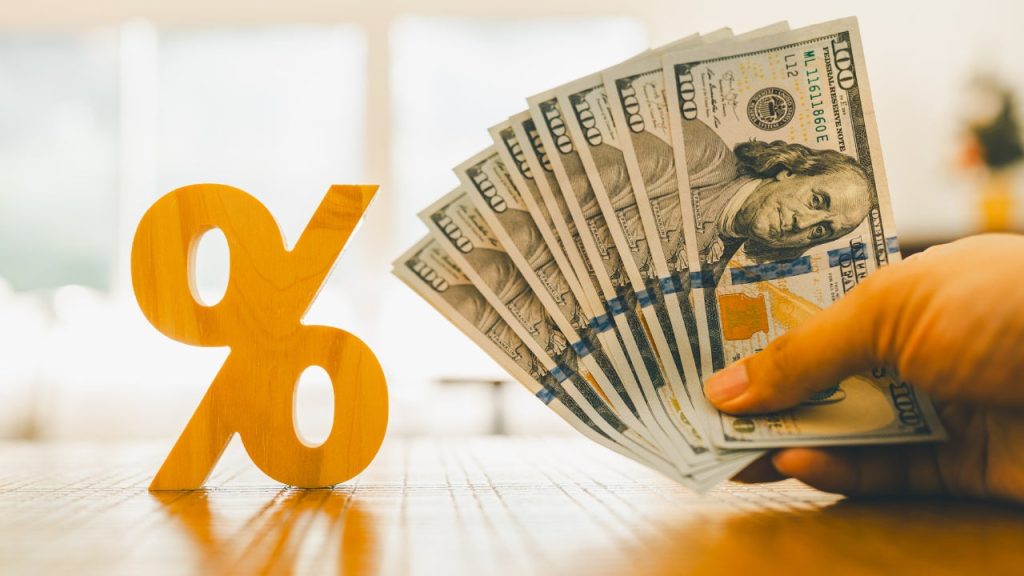Certificates of deposit are known for offering attractive fixed rates with higher returns than traditional savings accounts, more so during periods when interest rates are high. But what happens to the benefits of these timed deposit accounts when interest rates retreat, especially at a time when so many accounts, totalling trillions of dollars, are scheduled to mature?
A so-called CD “maturity tsunami”— a phrase recently coined by writer and banking consultant James White — is fast approaching, in which many CDs are set to mature as interest rates decrease. An estimated $2.5 trillion in CDs is set to mature within the next year.
If you have a certificate of deposit that’s about to mature during a period of falling interest rates, you’re likely concerned about where to move your money in search of high yield. Fortunately, you have options. Here’s what you need to know about what to do when you CD matures during a falling interest rate environment.
The current CD rate environment
Since the spring of 2022, the Federal Reserve’s Federal Open Market Committee has raised the federal funds rate 11 times to fend off economic hardships brought on by rising inflation, culminating with a rate range of 5.25–5.50 percent in July 2023. Although bad for those borrowing money, it was beneficial for saversl, especially those looking to lock in high rates. After all, interest rates offered at most financial institutions closely follow the federal funds rate.
However, now in the fall of 2024, as the Federal Reserve prepares for future interest rate cuts, many banks have already started lowering their top-yielding CD rates. Savers who have taken advantage of high-yielding rates over the past two years by moving their savings in CDs with terms up to two years are now facing a scenario where rates won’t be as high once their CDs mature. Banks will also feel the pinch once rates come down.
“As CDs mature, people will start moving their money to banks offering higher rates,” says Joe Camberato, CEO of National Business Capital. “Banks are already facing deposit losses, so this is just adding to their challenges.”
In less than three months, roughly $373 billion in CDs will expire at the nation’s four largest banks – Bank of America, Citi, JPMorgan Chase, Wells Fargo – accounting for 46.4 percent of the CDs at those banks, according to data from the Federal Deposit Insurance Corp. (FDIC). About $745.2 billion in CDs will expire over the next 12 months at those four major banks, making up 92.7% of the CDs held at those institutions.
Many savers are drawn to CDs because they offer fixed interest rates over a specified period, typically ranging from a few months to five years or longer. However, the rate locked in at the start may not reflect the future financial environment if rates are lower by the maturity date.
Overall, CD rates are declining. Many banks are lowering rates in preparation for the Federal Reserve’s plans to lower interest rates. For savers this means new CDs are offering lower returns than they were a year or two ago. If you have a CD that’s about to mature, you might find the new rates less appealing than what you’ve enjoyed so far.
“While low interest rates have benefits, they also have downsides, especially if kept low for too long,” says Ohan Kayikchyan, Ph.D., CFP, founder of Ohan The Money Doctor. “Lower borrowing costs mean that people who save money in banks earn less, and banks make less profit because they collect less interest on loans. Businesses and consumers may also take on more debt, which can become a problem for banks and borrowers when interest rates increase.”
Where are CD rates headed?
Experts expect CD rates to trend lower into 2025. Steven Conners, founder and president of Conners Wealth Management, predicts CD rates, on average, will be 3 percent, or lower, one year from now.
Conners tells Bankrate this is “not a guarantee,” but notes that “rates are artificially high as disinflation continues.” Kayikchyan suggests taking advantage of higher interest rates now while you still can.
“Current CD rates will gradually decline by the end this year and into next year,” says Kayikchyan. “This means locking in current CD rates could benefit savers, as future rates are unlikely to be attractive.”
Conners adds that the beginning of the lower rate cycle likely won’t be dramatic. You’ll still have some time to compare rates. “The banks typically act in a lag,” says Conners. “Meaning that interest rates won’t drop much initially. But over the next six months to a year, they will be markedly lower.”
Are CDs still worth it?
In a falling rate environment, you might wonder if CDs are still worth your investment. The answer, of course, depends on your financial goals.
“CDs are still offering solid rates right now,” says Camberato. “You can find 4 percent to 5 percent APY if you shop around, and this might be your last chance to lock in rates that high. If the Fed continues cutting, those numbers will drop. If rates fall below 3 percent, you might want to start looking at high-quality dividend stocks to stay ahead of inflation.”
There could still be opportunities to get higher rates through promotional CDs or as part of a CD laddering strategy. Keep an eye on developments in the economy and adjust your financial plan accordingly.
A CD could still be a viable option if you’re looking for security. CDs are insured at banks that are members of the FDIC up to $250,000 per depositor per bank, per ownership category. (The same holds true at credit unions insured by the National Credit Union Administration; only CDs at credit unions are called share certificates.) If safety is your top priority, this assurance can outweigh the drawback of lower interest rates.
Investing in CDs also offers a guaranteed return. Even though the rates might be lower, the guaranteed return that CDs provide is preferable to the volatility of the stock market or other investment options. However, if you’re seeking higher returns, you may need to explore other investments.
Options to consider when your CD matures in a falling rate environment
When a CD matures, you face a decision: reinvest the principal (and possibly interest) into another CD, find a new investment, or simply hold onto the cash. Here are some of your options.
Keep the CD in the same term
You could choose to do nothing and allow your CD to renew automatically. However, the drawback is that you’ll risk getting a lower interest rate. Camberato suggests shopping around instead.
“If you locked in a one-year CD last year, your rate was higher than it is now,” says Camberato. “As your CD matures, you need to be aware of auto-renewal features. Don’t let it roll over without checking your options. Rates are lower this year, but you can still find some decent deals if you shop around.”
Reinvest in a new CD
If you’re comfortable with the lower rates and prefer the safety of a guaranteed return, consider reinvesting your CD. Although you’ll likely earn a lower APY if you move your savings to another CD, you can earn a relatively competitive APY now that inflation has cooled. As of this writing, the inflation rate is at 2.5 percent.
“Putting your money in a savings account or a new CD with a solid interest rate is still possible and can be a smart choice,” says Kayikchyan. As CD rates start to lower, it’s wise to lock in a reasonable rate now while it’s not too late.
Look for promotional rates
Some financial institutions may offer higher rates for a limited time to attract deposits. These promotional offers can be a good alternative if you’re determined to stick with a CD.
Look beyond the ‘big four’ banks
Larger banks tend to offer much lower APYs, with rates as low as between 0.01-0.1 percent. This is why it’s best to expand your search beyond the four largest banks. There are plenty of opportunities at credit unions and smaller banks, according to John Blizzard, founder of CD Valet. Many federally-insured online-only banks and credit unions also offer CDs with high, competitive APYs.
“Despite their size, the nation’s four largest financial institutions [Chase, Bank of America, Wells Fargo and Citigroup] often offer significantly below-market rates on CDs,” says Blizzard. “With these institutions holding about 25% of the nation’s CDs, savers with accounts at large banks likely will find better returns elsewhere. Exploring options at smaller banks and credit unions could result in significantly higher yields.”
Explore alternative savings products
High-yield savings accounts and money market accounts could be other options to put your savings in when your CD matures. As of this writing, one of the highest money market account rates among the banks we monitor is 5.30 percent APY, which is offered by Vio Bank. This is roughly 12 times higher than the national money market account average of 0.44 percent, according to Bankrate’s most recent survey.
Close the CD
Rather than locking all your money into another CD, consider liquidating the CD and diversifying into stocks, mutual funds or exchange-traded funds. These alternatives could offer better returns in a lower rate environment.
Bottom line
If your CD matures during a period of falling interest rates, you still have options such as reinvesting in another CD or exploring alternative investments. Consider your financial goals. In some cases, a mix of strategies, such as laddering CDs or diversifying into other assets, might be the best way to maintain stability while maximizing returns.
It’s important to stay informed about the current rate environment and remain proactive. This way, you’ll be able to make the best choice when your CD matures during an uncertain financial climate.
Read the full article here












